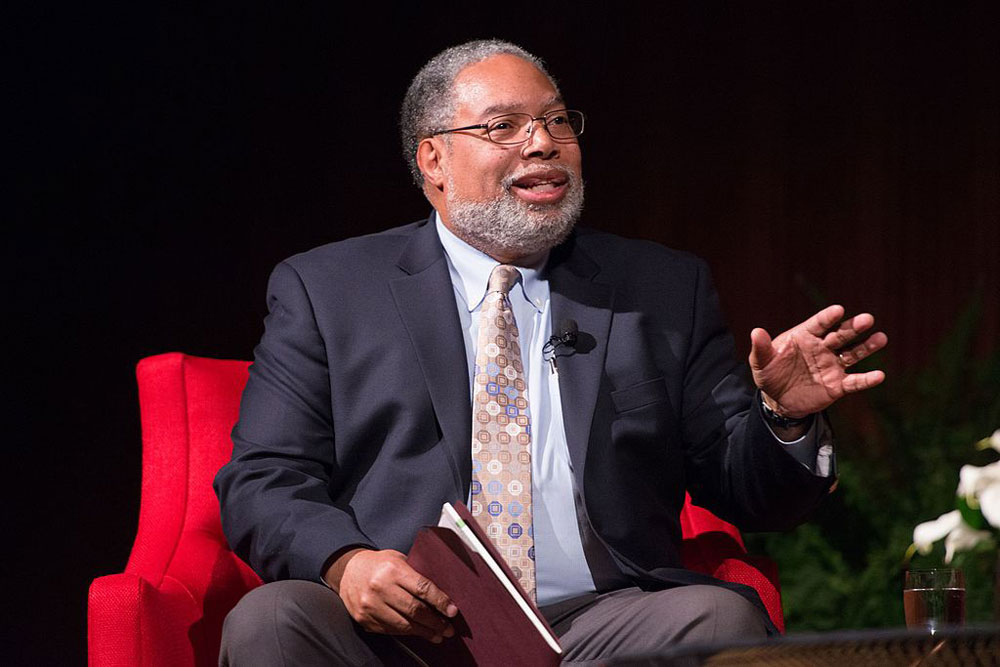
May 28, 2019; Washington Post and Chicago Tribune
Lonnie Bunch III, founding director of the Smithsonian’s National Museum of African American History and Culture, will next month become the Smithsonian Institution’s 14th Secretary, reports Peggy McGlone in the Washington Post. Bunch will replace David J. Skorton, who announced his resignation in December; Skorton’s last day as Secretary will be June 15th. Bunch’s term will begin the following day, June 16th.
Bunch will be first the black Secretary in the 173-year history of the Smithsonian—no small matter in a museum industry where, according to a 2018 survey of the American Alliance of Museums, only 4.1 percent of CEOs are black, while 90.2 percent of museum CEOs are white.
At NPQ, we have widely covered these disparities. Earlier this year NPQ noted that, “US museum leadership and curatorial staff have traditionally been so white that the institutions they guide have helped to marginalize entire cultures into subsidiaries of a main dominant and largely colonialist narrative.” One CEO change will not, by itself, change this dynamic. But the visibility of the Smithsonian post will certainly have an influence. For his part, Bunch says he hopes that him taking on the Secretary role “will open doors for others.”
It helps too that Bunch’s selection is widely acclaimed, which may give him greater room to maneuver. McGlone highlights his track record at the African American Museum, which has been stunningly popular (so much so that you often have to reserve tickets to enter in advance) and has attracted over four million visitors in its first two-and-a-half years. McGlone writes:
Bunch became director of the African American Museum in 2005. Over the next 11 years, he assembled a staff and amassed a collection of 40,000 items while overseeing the design, location and construction of the 400,000-square-foot building on the Mall… Showcasing political skill and fundraising prowess, Bunch secured $270 million in federal money and $317 million in private donations by the time the museum’s doors opened on Sept. 24, 2016.
Bunch also brings other strengths, including being the first Smithsonian museum director to rise up through the ranks and be named Secretary in the past 74 years. Bunch had also previously worked at the National Air and Space Museum from 1978 to 1979 and at the National Museum of American History from 1989 to 2001 (where he served the last six years as associate director of curatorial affairs). So, he has direct experience working at three Smithsonian museums, as well at other museums in Chicago and Los Angeles.
Sign up for our free newsletters
Subscribe to NPQ's newsletters to have our top stories delivered directly to your inbox.
By signing up, you agree to our privacy policy and terms of use, and to receive messages from NPQ and our partners.
Bunch, McGlone notes, has also been widely recognized in the field. McGlone writes, “In 2005, the American Alliance of Museums named Bunch one of the 100 most influential museum professionals. He was elected to the American Academy of Arts and Sciences in 2017, and last year, he was given the Phi Beta Kappa Award for Distinguished Service to the Humanities.”
Of course, in his new post, Bunch will face many difficult decisions. Bunch will oversee a $1.5 billion annual budget that supports 19 museums, nine research centers and the National Zoo. Steve Johnson in the Chicago Tribune notes that 28 million people visit at least one Smithsonian museum a year, with another 160 million accessing the museum network online.
Bunch will also, notes McGlone, oversee a staff of 6,800, collections of almost 155 million items, and 13 million square feet of buildings. It is estimated that the Smithsonian must raise $500 million a year in donations to supplement its $1 billion federal budget line-item. Bunch will report to “a 17-person board led by the chief justice of the United States and made up of members of Congress and civilians.”
One set of decisions Bunch will face is whether the Smithsonian should create new museums, such as a Latinx museum or a women’s museum. Outgoing Secretary Skorton had expressed skepticism toward adding new museums, but late last year the Smithsonian took a big step on the path to creating a museum based on the Latinx community’s experience in the United States when it announced plans to open a 4,500 square-foot permanent Latinx gallery in 2021 within the Museum of American History.
Two years before the African American Museum opened, Bunch talked with Johnson about the philosophy with which he helped shepherd the museum’s design. The question, Bunch said, is, “How do you take a particular culture and use it as a lens to understand what it means to be an American?”
I didn’t hear a lot of other people saying that, and I didn’t think it was best for the Smithsonian to create a museum that was by black people for black people—but rather to take an opportunity to say, “This is the quintessential American story that shapes us all.”
As for his new charge, Bunch says, “It is important, I think, for the public to view the Smithsonian not simply as an attic of nostalgia, but as a cauldron of ideas, of innovation and understanding that can be transformative for our country.”—Steve Dubb













